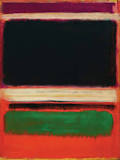POP ART - Causes, Artists, Sketch
- artedelic
- Dec 3, 2015
- 2 min read
POP ART - an 1950s art movement that is charaterised by the imagery of consumerism and popular culture
Pop art was a reaction against Abstract Expressionism, which was admired by critics but didn't connect with the general public. Pop art sought to destroy the notions of "exclusive art" and instead tries to appeal to the mainstream crowd. It draws inspiration from the most mundane, familiar objects possible. Pop art shares many characters of the Dada-Surrealists, such as collages, readymades, and juxtaposed imagery.
However, unlike Dadaism, which was corrosively anti-art, Pop artists brought a more positive outlook and is more concerned about expanding means of expression rather than debunking traditions. Also, unlike Dada, which sought to destroy bourgeois establishment, Pop Art sought to reflect the social values and environment from which it sprang, using themes which appealed to the American consumers: food, cars, and romance.
CHARACTERISTICS
- uses easily recognisable objects to express the popular culture of the day (ex: consumer goods, advertising graphics, magazines, television, film, cartoons and comic books)
- uses bright, contrasting colours
- simple compositions (this and the bright use of colours are intended to appeal to the general public)
- art can be made from anything (influenced by Dadaism)
- uses irony (in fact the concept of Pop Art itself is sort of ironic, as Rosenburg put it, "Advertising art which advertises itself as art that hates advertising."
MARK ROTHKO
25 Sept 1903 - 25 Feb 1970
Mark Rothko is best-known for his Colour Field paintings, which uses colour combinations to evoke emotions. "It was not that the figure had been removed, but the symbols for the figures," he once said. By eliminating figurative representations, Rothko aims to connect to the viewers directly through instinctual recognition.
ANDY WARHOL
6 Aug 1928 - 22 Feb 1987
Warhol was a printmaker, filmmaker, draftsman and painter who became the leading icon in shaping Pop Art. He played a key role in making popular imagery (soup cans, Coca Cola bottles etc.) acceptable in fine arts. He turned stars into the objects of his art, and in turn became quiet a star himself. The element of repetition is crucial in his works---not only in the photocopied-precision of his paintings, but also in using assistants to mass-produce his works.
ROY LICHTENSTEIN
27 Oct 1923 - 29 Sept 1997
One of the first Pop artists to attract attention, he became the focus point for criticism of the movement. His controversial Pop Art style was heavily influenced by comic strips, and he was accused of banality, lack of originality, and even copying. Lichtenstein was greatly interested in mechanical reproduction, using Ben-Day dots to colour his works. It is one of the key points of pop art---all forms of communication are filtered through codes or languages. This may have influenced his later works, which involved Pop art reproductions of "high art" masterpieces, such as Van Gogh's "Bedroom in Arles".
SKETCH


















Comments